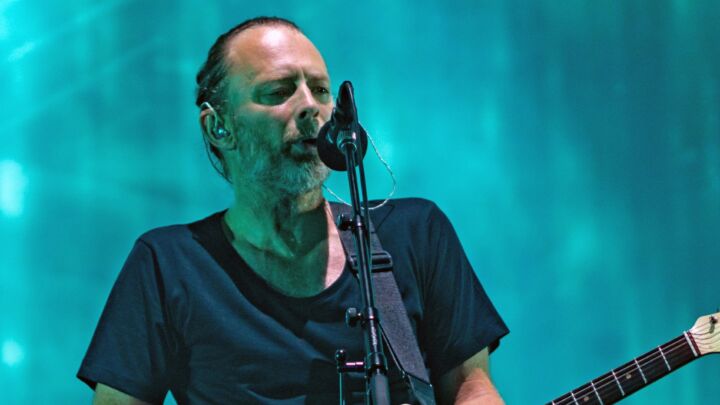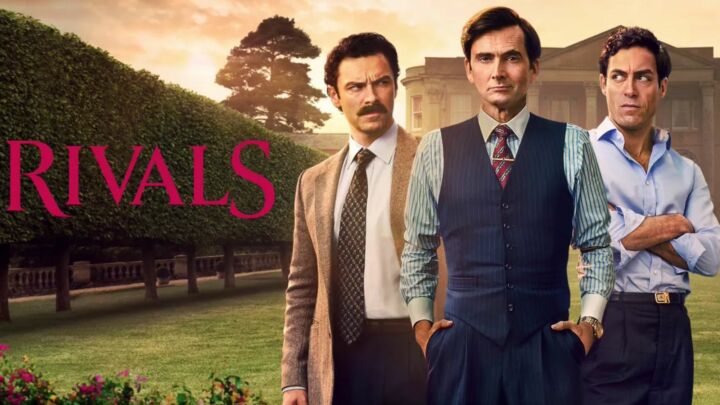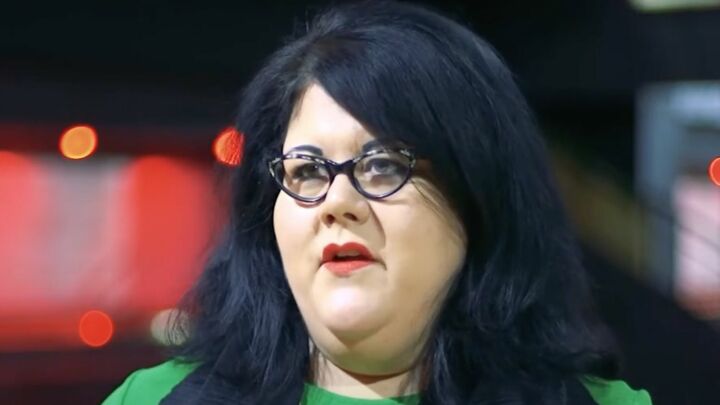A cultural revolution at Tate Liverpool
Free of Western pessimism, the young Chinese artists on exhibition in Britain are witty and experimental.

Want to read spiked ad-free? Become a spiked supporter.
In the Gospel according to John, Pontius Pilate is held to have asked Jesus ‘What is truth?’ That question lies at the heart of a major UK exhibition of contemporary Chinese art – The Real Thing.
How do we know anything? The Chinese say that the height of Mount Everest is 8,848m, so when in 1999 an American GPS reading pegged it at 8,850m the radical artist Xu Zhen organised an expedition to the mountain to bring back the top part of the summit and put it on display in Shanghai, thereby restoring the mountain to its ‘real’ height. This provoked outrage among foreign correspondents in China, especially when experts confirmed that Everest was indeed shorter than had been assumed.
The pinnacle of Everest in a refrigerated cabinet, along with expedition maps, equipment and a video of the team sawing off the peak and sliding it down the mountain – together with before and after shots – are now on display for all to see in the exhibition at Tate Liverpool as ‘8848 Minus 1.86’.
Or are they? Was it all an elaborate hoax by citizens of a country that once banned irony? Who is having the sense of humour failure now? How tall is Everest really? How do we know? Does it change? Does it matter?
Chinese art, like China itself, is too vast to be contained or pigeonholed. This allows critics to project whatever they want on to it. If they see China to be out of control and rapacious then they are more likely to fall for the Everest scam. If they see it as suffering from the tremendous upheavals of rapid industrialisation then they will read misery and drudgery in the faces of factory workers who would otherwise have toiled in the fields.
What is the real thing when it comes to China? The co-curators of the exhibition should be commended for daring to ask the question, even if the answer is full of contradictions and ambiguities, ‘the real thing’ oscillating as it does between an aspiration towards authenticity on the one hand and the Coca-Cola slogan on the other – which is perceived by many as a metaphor for the dangers of unfettered consumerism.
Outside the exhibition, in Albert Dock itself, floats a 7m high model of Russian constructionist Vladimir Tatlin’s ‘Monument to the Third International’ of 1919. Except that Ai Weiwei has remodelled the replica as ‘Working Progress (Fountain of Light) 2007′, transforming it into an illuminated chandelier that glistens on the water to celebrate ‘the enlightened thinking behind Lenin’s theories’ – distinguishing these from the system that sent Weiwei’s own family into exile during the Cultural Revolution.
Inside the exhibition hall Qiu Zhijie also references the past in his ‘Railway from Lhasa to Kathmandu’. In 1863, a 33-year-old Indian, Nain Singh, was tasked by the Royal British Engineers to map out Tibet in precise 33inch strides whilst concealing his purpose from onlookers by using prayer beads to keep count. Qiu has completed the journey in reverse, wearing ankle chains separated by 33inches and collecting local artefacts along the way that he smelted into railway tracks now suspended in the air, to symbolise the completion of the highest railway in the world, which opened in 2006.
It is as if both these artists are pointing to the fact that neither the Soviet Union nor the British Empire quite completed their plans. Only now might it be possible to fulfil Tatlin’s vision. Ai Weiwei should know as he is working with the engineers Ove Arup to build a similar structure for the Beijing Olympics in 2008. Qiu Zhijie states directly that the opening of the railway would have more impact on these remote parts than the British Empire or the Chinese imposition of sovereignty on Tibet in 1959.
Nearby Wang Wei has made a video of a walled space built by migrant labourers in Beijing as part of his exhibition in the 798 Space of the Dashanzi Art District. What is he saying?
Is this a new construction within an old building that finally gets pushed down by those that made it, representing the possible fragility and futility of the new China? Or is it an old construction (using recycled bricks that arrive on donkey-drawn carts) within a newer space (built of steel and concrete) even though the space itself is reclaimed from a former machine tool factory? Wang wanted to highlight the workers’ plight in a period of constant churning and the creation of new divisions, symbolised by the wall. But his views on this and what it means may be very different to ours.
The opening exhibit itself is a play on our sense of reality. Arriving from the brightly lit gallery you walk onto a grey and dreary factory floor, populated by vast grinding machines and heavy metal ring sections over 30cm thick and a metre in length. Zhuang Hui’s ‘Factory Floor’ is eerily silent. Where are the workers? And why have they abandoned their lunch on the floor? Based on his real experience of working in ‘The East is Red Tractor Factory’ the exhibit recalls an incident when workers rushed off to the aid of an injured comrade.
Except that the meticulously recreated walls, complete with graffiti and grime, as well as the machines, chains, steel sheets and drums are all made of polystyrene, carefully and painstakingly painted to appear like the real thing. Like Everest, it fools the casual observer, but unlike much contemporary art elsewhere in the world it makes no pretence to being something it is not on any supposedly deeper level.
Elsewhere in this collection of mostly young artists, all of whose work has been completed since 2000, a sense of mirth abounds. Wang Peng locked his friends and guests into a gallery space with a padlock for which he did not have the key. How would they cope? Now the film of their reactions is the exhibit, although they did not know this at the time. More amusingly maybe, Wang is also found being filmed walking through New York and Beijing trailing a ball of string that unravels from a hole in the back of his jacket. ‘Passing Through New York 1997’ and ‘Passing Through Beijing 2006′ explores the respective reactions of passers-by, traffic and officials as they literally get caught up in his journey. Is there a difference? You decide.
Some exhibits, such as Yang Shaobin’s series of paintings, ‘800 Metres’, examining workers in a coalmine, are undoubtedly bleaker (and weaker) than others. China suffered fatal accidents in 30 mines in 2005. No one should imagine that development has not come at a cost. But is it one worth paying? Certainly the presumption by the curators that Wang Gongxin’s exhibit ‘Our Sky is Falling!’ should be read as an indictment of change appears unduly negative: a family stare in wonder as their roof caves in – but their faces neither suggest fear nor anger.
Cao Fei’s video of workers at the Osram lighting factory in Foshan was previously exhibited as part of the China Power Station: Part 1 exhibition put on by the Serpentine Gallery at Battersea Power Station in 2006 and previously reviewed on spiked (see Reawakening the ‘yellow peril’ by Tristan Edmondson).
This beautiful work can be read in many different ways. The tedium of factory work may not appeal to the artistic sensitivities of some Western cultural commentators. An appreciation of a world without light seems beyond them. But the final part of Fei’s video, ‘Whose Utopia? What are you doing here?’ entitled ‘My Future is not a Dream’, suggests hope and aspiration for a bright future among those who, for now, toil to light up the new China.
In many ways ambition and ambiguity are the key themes running through this exhibition. The works themselves are not necessarily typical of the artists. As Simon Groom, head of exhibitions at Tate Liverpool, notes in his introduction to the catalogue: ‘[M]any commentators on Chinese art are often bewildered by the variety of work an artist is capable of producing; works that might appear to lack consistency or logical connection between them, so opening them to accusations of unevenness, or lack of authenticity.’
But why should these artists be consistent, and who demands authenticity? China is a dynamic, exciting and rapidly changing society. This art reflects that. In his introduction, Xu Zhen, the man who would move mountains, urges us ‘not to seek out a logic that’s not there’, as well as stating boldly that ‘We’ll make better exhibitions next year…’. In the last of his Theses on Feuerbach, written in 1845, Karl Marx wrote; ‘The philosophers have only interpreted the world, in various ways; the point is to change it’. Replacing the word ‘philosophers’ with ‘Westerners’ in the above might provide an apt description for the ambitions behind The Real Thing.
In the run-up to its China Week in 2005, the BBC ran a series of interviews with young Chinese people. One of them, Jeff Qiang, remarked: ‘I know one day we will be the greatest power in the world. We all believe that.’ (2) The Real Thing suggests Chinese artists lack none of this self-belief and seem to be willing to explore almost anything, in any medium, including the meaning of meaning. Instead of trying to discover an authentic Chinese ‘voice’, Westerners would do well to be inspired by their ambition.
Bill Durodié is a senior lecturer in risk and security at Cranfield University, UK and is a co-founder of the Manifesto Club.
The Real Thing: contemporary art from China runs at Tate Liverpool until 10 June 2007 (further details and booking).
Kirk Leech explained why some western critics are using China’s environmental record to attack its economic growth. Stuart Simpson defended China’s investment in Africa despite accusations of corruption from the West. Though provocative Nathalie Rothschild thought the film Ghosts, about Chinese migrant workers, fails to ask any probing questions. Back in 2003 Mischa Moselle said it was fear, not SARS that was debilitating Hong Kong’s health. Or read more at: spiked issue Asia
(1) China’s middle class revolution, BBC News, 11 October 2004
Celebrate 25 years of spiked!
A media ecosystem dominated by a handful of billionaire owners, bad actors spreading disinformation online and the rich and powerful trying to stop us publishing stories. But we have you on our side. help to fund our journalism and those who choose All-access digital enjoy exclusive extras:
- Unlimited articles in our app and ad-free reading on all devices
- Exclusive newsletter and far fewer asks for support
- Full access to the Guardian Feast app
If you can, please support us on a monthly basis and make a big impact in support of open, independent journalism. Thank you.






Comments
Want to join the conversation?
Only spiked supporters and patrons, who donate regularly to us, can comment on our articles.